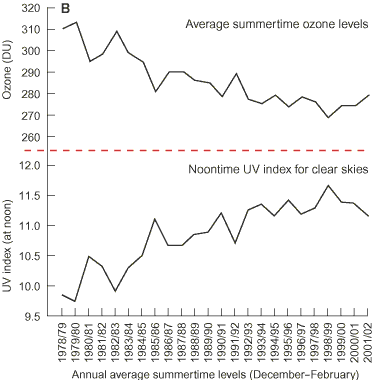Real fucking dumb. The article states that the temperatures were the hottest ever record on the reef. What is it with you, Mr. Flacaltenn? Why are you trying to divert and lie about what the article states in very clear english?Great Barrier Reef suffered worst bleaching on record in 2016, report finds
Higher water temperatures in 2016 caused the worst destruction of corals ever recorded on Australia's Great Barrier Reef, a study has found.
Some 67% of corals died in the reef's worst-hit northern section, the ARC Centre of Excellence for Coral Reef Studies report said.
The situation was better in the central section, where 6% perished, while the southern reef is in good health.
But scientists warn recovery could be difficult if climate change continues.
Coral bleaching happens when water temperatures rise for a sustained period of time.
In February, March and April, sea surface temperatures across the Great Barrier Reef were the hottest on record, at least 1C higher than the monthly average.
"Some of the initial mortality was down to heat stress," said study leader Professor Terry Hughes.
"The coral was cooked."
How bleaching occurs
Far more has been lost through gradual starvation, after the coral expelled the colourful algae zooxanthella, which turns sunlight into food.
This is what leads to the white, skeletal appearance of the coral, which is left without its main source of energy.
Great Barrier Reef suffered worst bleaching on record in 2016, report finds - BBC News
A major bleaching event last year, doesn't look much better for this year.
Very unscientific statements in that piece. Especially about the "cooking" -- because bleaching can be a COOLING event as well. Especially in the greater than +/-2 degC over weeks type time frame.
In fact bleaching CAN BE any of one of about 6 or 8 factors. Including changes in salinity, UV exposure, sea level rise/fall, non-organic pollution, etc..
And I don't suppose that this chart BELOW would have ANYTHING at all with the fragile eco system..

Naaawww. Couldn't be. There would be NO FUNDING to investigate it..
Except that we NOW KNOW that LOCALIZED bleaching events can be blamed on agriculture runoff, EVEN minute amounts of sunscreen components at popular dive sites. But CERTAINLY, not things like UV shifts, pollution or ENSOs or even COOLING events.
You must have read a different article
"the report shows that the loss of parrotfish and sea urchin – the area’s two main grazers – has, in fact, been the key driver of coral decline in the region. An unidentified disease led to a mass mortality of the sea urchin in 1983 and extreme fishing throughout the 20th century has brought the parrotfish population to the brink of extinction in some regions. The loss of these species breaks the delicate balance of coral ecosystems and allows algae, on which they feed, to smother the reefs."
This is a good example of how enviro issues and science have been "dumbed downed" by looking to GW as the PRINCIPAL and primary driver of EVERY eco issue. There's PLENTY of new work that contradicts the "consensus" GW propaganda. One of my favorites is ----
Coral Reefs in Palau Surprisingly Resistant to Naturally Acidified Waters
The team collected water samples at nine points along a transect that stretched from the open ocean, across the barrier reef, into the lagoon and then into the bays and inlets around the Rock Islands of Palau, in the western Pacific Ocean. With each location they found that the seawater became increasingly acidic as they moved toward land.
“When we first plotted up those data, we were shocked,” said lead author Kathryn Shamberger, then a postdoctoral scholar at Woods Hole Oceanographic Institution (WHOI) and a chemical oceanographer. “We had no idea the level of acidification we would find. We’re looking at reefs today that have levels that we expect for the open ocean in that region by the end of the century.”
The new research, published in Geophysical Research Letters, a journal of the American Geophysical Union, explains the natural biological and geomorphological causes of the more acidic water near Palau’s Rock Islands and describes a surprising second finding – that the corals living in that more acidic water were unexpectedly diverse and healthy. The unusual finding, which is contrary to what has been observed in other naturally low pH coral reef systems, has important implications for the conservation of corals in all parts of the world.
Learning tip here is -- that almost EVERY PAPER of this type starts off with an HONEST scientific appraisal of how LITTLE we know about the bounds of "normal" in these bio-systems. YET -- everyone rushes to point to ONE variable as the evil tweaker in every case.




